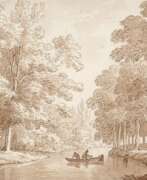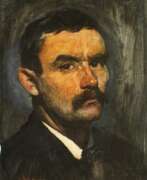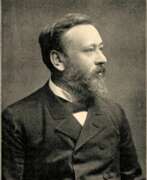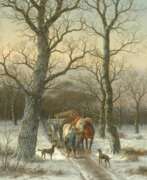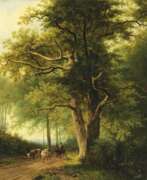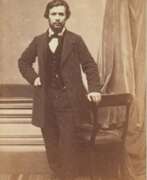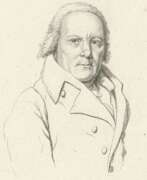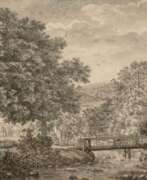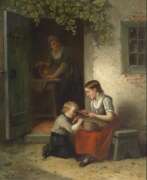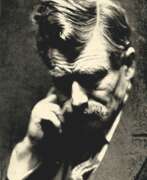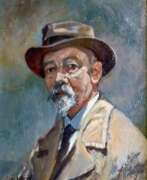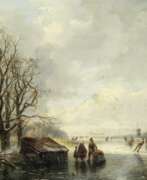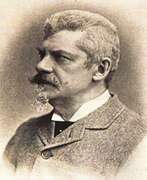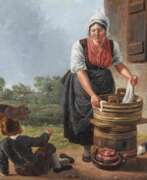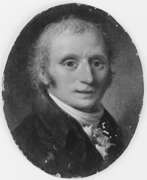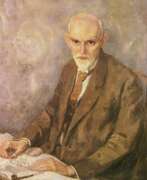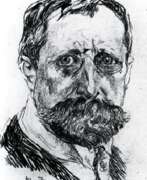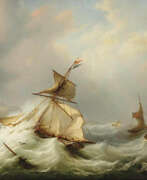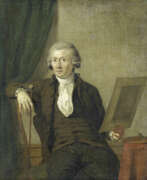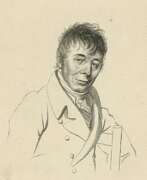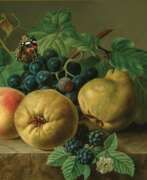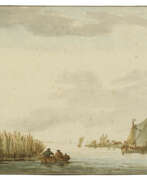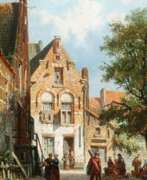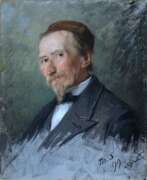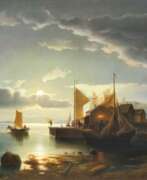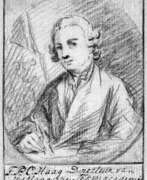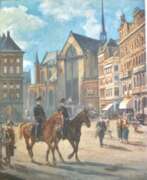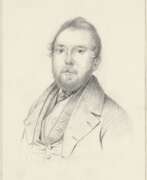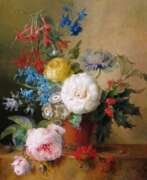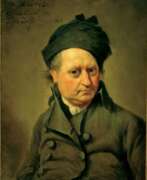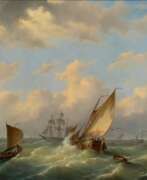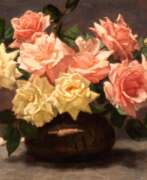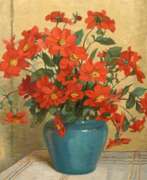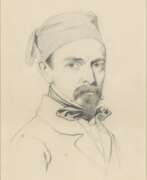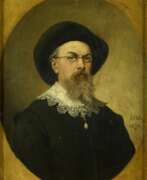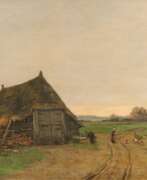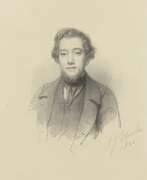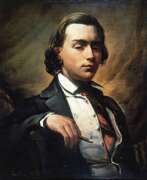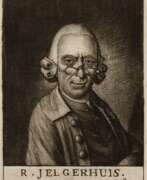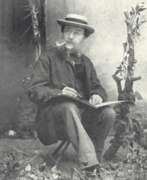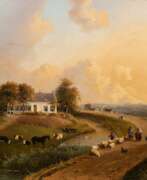The Netherlands 19th century
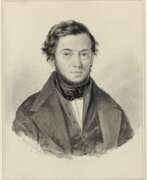

Jacobus Theodorus "Jacob" Abels was a Dutch painter. He was a pupil of the animal painter Jan van Ravenswaay. In 1826 Abels had visited Germany, and on his return settled at the Hague. He was especially noted for his paintings of moonlit landscapes. The Museum at Haarlem has works painted by him.


Anna Adelaïde Abrahams was a Dutch still life painter. Beginning in 1882 Abrahams showed her work in Levende Meesters (Living Masters) exhibitions throughout the Netherlands. She exhibited in Europe in Paris, Berlin, Düsseldorf and Brussels. She exhibited her work at the Palace of Fine Arts at the 1893 World's Columbian Exposition in Chicago, Illinois. Abrahams was a member of the art association Ons Doel Is Schoonheid (Our Goal Is Beauty) and was on the board of the Pulchri Studio.
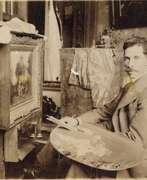

Johannes Evert Hendrik Akkeringa was part of the second generation of the Hague School painters. Akkeringa is primarily known for his paintings and watercolours of women and playing children at the beach, women mending nets and intimate tea-time conversations.
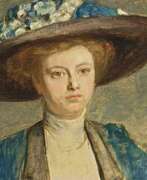

August Allebé was an artist and teacher from the Northern Netherlands. His early paintings were in a romantic style, but in his later work he was an exponent of realism and impressionism. He was a major initiator and promoter of Amsterdam Impressionism, the artist's association St. Lucas, and the movement of the Amsterdamse Joffers. Amsterdam Impressionism – sometimes referred to by art historians as the School of Allebé – was the counterflow to the very strong Hague School in the movement of Dutch Impressionism. As a professor at the Royal Academy of Amsterdam (Rijksakademie van beeldende kunsten) he fostered a cosmopolitan attitude toward art and the promotion and motivation of his students, and provided a significant stimulus to developments in modern art.
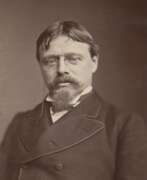

Lawrence Alma-Tadema was a Dutch-British artist renowned for his detailed and romanticized portrayals of ancient civilizations, particularly Rome and Egypt. His meticulous attention to historical accuracy and the lavish representation of marble and luxurious settings distinguished his work. Notably, his fascination with ancient cultures was sparked by his honeymoon visit to Italy and Pompeii, influencing his artistic focus for decades.
Lawrence Alma-Tadema's early work, such as "The Education of the Children of Clovis," showcased his interest in historical subjects and established his reputation. This painting, alongside others like "The Sad Father," demonstrates his commitment to historical detail and narrative depth.
After moving to England due to the Franco-Prussian War and personal reasons, Lawrence Alma-Tadema's career flourished. His works, characterized by their bright palette and refined details, resonated with Victorian audiences, earning him considerable fame and financial success. He was knighted in 1899 and continued to be a pivotal figure in Victorian art, influencing peers and future generations alike.
Lawrence Alma-Tadema's legacy experienced a decline posthumously but saw a resurgence in the 1970s. Today, he is celebrated for his contributions to the Neoclassical and Victorian art movements, with his works featured in prominent collections worldwide, including the Getty Museum and the Tate Gallery.
If you are fascinated by Lawrence Alma-Tadema's artwork and wish to stay updated on sales and auction events related to his works, consider signing up for updates. This will ensure you remain informed about new opportunities to explore and possibly acquire pieces of his illustrious legacy.
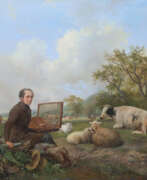

Hendrikus van de Sande Bakhuyzen was a Dutch landscape painter and teacher.
Bakhuyzen studied at The Hague Academy of Art. He is known for his romantic pastoral scenes, especially paintings of livestock, with detailed landscapes.
In 1822 he became a member of the Royal Academy of Arts in Amsterdam and a member of the board of the Academy of Arts in The Hague. He was later elected director of the Hague Academy. Hendrikus Bakhuyzen made a significant contribution to the Romantic period in Dutch art through his work and activities, raising many talented students and followers who founded the artistic movement known as the Hague School.
His children were also very talented: son Julius van de Sande Bakhuyzen (1835-1925) became a renowned landscape painter; daughter Gerardine Jacob van de Sande Bakhuyzen (1826-1895) became a still life painter; son Henrik Gerard van de Sande Bakhuyzen (1838-1923) became a prominent astronomer, member of the Royal Netherlands Academy of Arts and Sciences and director of the Leiden Observatory; son Ernest-Fredrich van de Sande Bakhuyzen was also an astronomer at the Leiden Observatory.
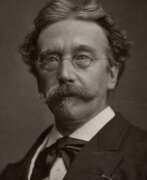

Alexander Hugo Bakker Korff was a 19th-century Dutch genre painter. He was a pupil of the painters Cornelis Kruseman and Huib van Hove. He was trained in the 1840s at the Koninklijke Academie van Beeldende Kunsten in the Hague and the Koninklijke Academie. He became known for his "Bakker Korffjes" – genre pieces of ladies in caps in interiors, that he started painting in 1856 while he was living in Oegstgeest with his sisters as models. In 1870 he was awarded the title ridder in de Leopoldsorde after his works were presented at an exhibition in Brussels in 1869.
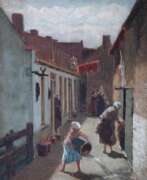

Fridolin Becker was a Dutch painter. Becker studied from 1847 to 1859 at the Koninklijke Academie van Beeldende Kunsten in The Hague, including four years with David Bles. He spent the year 1852 studying in Paris. He was a member of Pulchri Studio. From 1858 to 1860 he worked in Zuilen near Utrecht. He taught at the Hague Art Academy for 33 years.
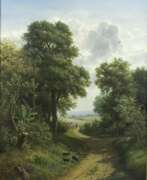

Jan Daniel Beynon was a Dutch-Indonesion landscape, figure and portrait painter. He studied 1848-55 as pupil of C. Kruseman and N. Pieneman at the Amsterdam academy and exhibited in that town repeatedly between 1852 and 1867. In 1855 he returned to the Dutch colony Indonesia; his oeuvre mainly consists of landscapes and persons of that region.


Valentijn Bing was a Dutch painter, illustrator and lithographer.
Bing painted genre scenes and cityscapes, portraits, as well as paintings on religious themes. He is best known for his sketchbooks depicting the costumes and customs of the Netherlands, which are pictorial descriptions of local dress and events such as carnival, ice skating, cheese making, and weddings. This work was published in 1857 in collaboration with the lithographer Jan Braet von Überfeldt (1807-1894).
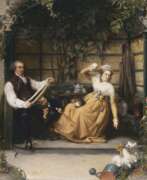

David Bles was a 19th-century painter from the Northern Netherlands. According to the Netherlands Institute for Art History, at the age of thirteen Bles was talented enough to be accepted at the Hague Academy. He attended classes from 1834 to 1837 and from 1838 to 1841. He became a pupil of the painter Cornelis Kruseman and his nephew Jan Adam Kruseman. Bles then travelled to France to study with Joseph-Nicolas Robert-Fleury in Paris. He remained in Paris until 1843 after which he settled in The Hague, though he was a member of the Royal Academy in Amsterdam between 1845 and 1899. He painted scenes from the history of Dutch painting and is best known for portraits and genre paintings.
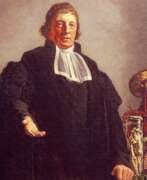

Jan Bleuland was a Dutch physician, medical scientist, educator and writer.
Bleuland was an intellectually advanced man, a sought-after physician, and a rich lover of the arts. Jan Bleuland taught anatomy, physiology and obstetrics for 31 years and was professor and rector of Utrecht University. His talents as a physician and medical researcher were recognized not only by his patients and the scientific community, but also by the highest authorities.
During his lifetime, Jan Bleuland amassed a large collection of medical specimens of the human body, which he used for research. Part of this significant collection is still on display in the original wooden Bleulandkabinet in the Utrecht University Museum. The Bleulandkabinet contains an extensive collection of skeletons, embryos in alcohol and wax preparations of body parts. His pioneering preparations were acquired by Utrecht University by royal decree of King Willem I in 1815 and are still used as teaching material.


Johannes Bosboom was a Dutch painter and watercolorist of the Hague School, known especially for his paintings of church interiors. At the age of 14 he became a student of Bartholomeus van Hove and painted in his studio along with Van Hove's son Hubertus van Hove. Together they worked on the pieces of scenery that Van Hove created for the Royal Theatre in The Hague. The young Bosboom traveled to Germany in 1835 to Düsseldorf, Cologne and Koblenz and painted the watercolor View of the Mosel Bridge at Koblenz. In 1839 he traveled to Paris and Rouen and received a silver medal for View of the Paris Quay and the Cathedral at Rouen. He also painted a number of church interiors, a relatively traditional genre. Bosboom had a great deal of success with these pieces, and for the rest of his career he would repeatedly return to this theme, which was the one in which he would achieve his greatest fame. Bosboom's choice of subject matter may seem to isolate him from the rest of the Hague School, but his search for ways to reproduce the spatial atmosphere through light, shadow, and nuances of color places him in the very mainstream of this group. In 1873, during a stay in Scheveningen, he painted many watercolors of town views, the dunes, the beach and the sea.
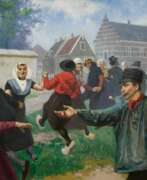

Johan Coenraad Braakensiek was a Dutch painter, illustrator and political cartoonist. For most of his career, Braakensiek worked for a number of publishers as an illustrator. However, he also found work as a political cartoonist for the magazines Geïllustreerd Politie-Nieuws, De Amsterdammer and De Groene Amsterdammer. His first work was with Geïllustreerd Politie-Nieuws where he contributed infrequently. His break and rise in popularity came in 1886 when he was made the political cartoonist for De Amsterdammer magazine. He also was affiliated with De Groene Amsterdammer magazine from 1925 to 1931. Braakensiek remains popular thanks to the books he worked on as illustrator. Books such as Van Allerlei Slag and Uit het leven van Dik Trom, which feature his art are widely known and read.
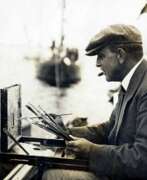

Carl August Breitenstein was a Dutch landscape painter and graphic artist. Breitenstein was a nephew of the German painter Alfred Breitenstein. Breitenstein studied from 1884 to 1889 at the Rijksakademie van beeldende Kunsten in Amsterdam. He engaged in plein air painting in the style of the Hague School, influenced by Impressionism. He mainly painted landscapes, but also city and harbor views, dune landscapes and floral still lifes. Breitenstein was a member of Kunstenaarsvereniging Sint Lucas and Arti et Amicitiae.
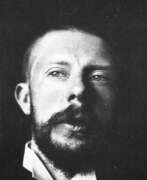

George Hendrik Breitner was a Dutch painter and photographer. An important figure in Amsterdam Impressionism, he is noted especially for his paintings of street scenes and harbours in a realistic style. He painted en plein air, and became interested in photography as a means of documenting street life and atmospheric effects — rainy weather in particular — as reference materials for his paintings.
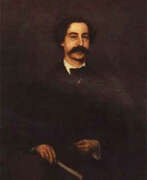

Jacques François Joseph Carabain was a Dutch-Belgian painter, known primarily for his scenes of cities and buildings in the Romantic-Realist style. He was especially interested in Medieval and Baroque structures, and was often attracted to busy market places.


Lovis Corinth was a German artist and writer whose mature work as a painter and printmaker realized a synthesis of impressionism and expressionism.
Corinth studied in Paris and Munich, joined the Berlin Secession group, later succeeding Max Liebermann as the group's president. His early work was naturalistic in approach. Corinth was initially antagonistic towards the expressionist movement, but after a stroke in 1911 his style loosened and took on many expressionistic qualities. His use of color became more vibrant, and he created portraits and landscapes of extraordinary vitality and power. Corinth's subject matter also included nudes and biblical scenes.


Reinier Craeyvanger was a 19th-century Dutch painter and etcher who was also a gifted musician. He etched his own sketches and collaborated with publishers on prints. He is also known for genre works and copies of old masters. He was a member of Arti et Amicitiae and served as chairman for five years. In 1848 he was one of the founders of the "Haagse Etsclub", a club for etchers in The Hague, where he lived a few years until 1850.


Gijsbertus Craeyvanger was a 19th-century painter from the Dutch Republic. He was a pupil of Jan Willem Pieneman at the Royal Academy of Art, The Hague in Amsterdam, and later became a teacher at a drawing school in Utrecht. His most notable pupil was Albert Neuhuys. Though he is known for landscapes, he also painted figures in the landscapes of Carel Jacobus Behr.
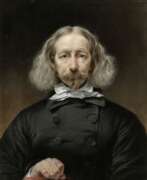

Jean Augustin Daiwaille was a Dutch portrait painter and lithographer. He studied under Adriaan de Lelie. He was director of the Rijksakademie from 1820 to 1826. After that time, he resided at Rotterdam, where he was very successful in painting portraits. He was an early exponent of lithography during the 1820s, overseeing the installation of a lithographic press at the new Koninklijke Academie, and instructing the students on the use of the technique. He established his own lithographic business in 1826, producing reproductions of his own paintings, and collaborating with other artists such as Barend Cornelis Koekkoek to make copies of their work.
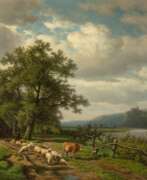

Alexander Joseph Daiwaille was a Dutch portrait painter. He specialized in painting portraits, like his father, although he later in life painted landscapes. He traveled and worked all around the Netherlands and Germany. Daiwaille then moved and settled in Brussels where he lived until his death in 1888.
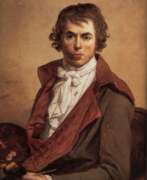

Jacques-Louis David, a preeminent French artist of the Neoclassical movement, made a profound impact on the art world with his compelling history paintings and portraiture. Born in Paris in 1748 into a prosperous family, David's early life was marked by tragedy and ambition. Despite losing his father at a young age and facing opposition from his family, his determination to pursue art led him to become a student of Joseph-Marie Vien and later, a notable figure in the French Academy in Rome. David's artistic journey was characterized by a rigorous classical education, culminating in winning the prestigious Prix de Rome in 1774, which allowed him to study the masterpieces of classical antiquity and the Renaissance in Italy.
David's work is renowned for its classical austerity, a response to the frivolous Rococo style that preceded him. His paintings, such as "The Oath of the Horatii," reflect a blend of classical themes with a modern sense of emotion and drama, resonating with the revolutionary spirit of his times. As the French Revolution unfolded, David aligned himself with its ideals, becoming an active supporter and using his art to serve political purposes. He was closely associated with leaders of the Revolution, including Maximilien Robespierre, and later became the official painter of Napoleon, contributing significantly to the iconography of the era.
Throughout his career, David had a significant influence on French art, not only through his own works but also as a teacher. His studio was a nurturing ground for the next generation of French painters, despite his reputation for being demanding. David's move to Brussels after the fall of Napoleon marked the final phase of his career, where he continued to paint until his death in 1825.
David's legacy extends beyond his contributions to Neoclassical art. He played a crucial role in the development of modern art history, blending classical ideals with contemporary themes, and influencing not only his contemporaries but also future generations of artists. His works, housed in museums around the world, continue to be studied and admired for their technical mastery and emotional depth.
For art collectors and experts, David's oeuvre offers a fascinating insight into a transformative period in art history, where the classical and the contemporary intersected to create a new visual language. His paintings not only depict historical and mythological scenes but also embody the ideals, struggles, and aspirations of his time.
For those interested in exploring the works of Jacques-Louis David and the impact of his art on the Neoclassical movement, updates on new product sales and auction events related to David's work can provide valuable opportunities to engage with his legacy. Signing up for updates ensures access to the latest information and events, offering a deeper understanding of this pivotal artist's contributions to art and culture.
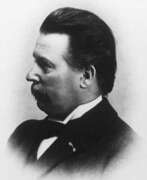

Théophile de Bock (Dutch: Théophile Emile Achille de Bock) was a Dutch landscape painter of the Hague School.
He painted moody landscapes of Dutch nature that many consider too gray and sketchy. However, de Bock's work has admirers as well.
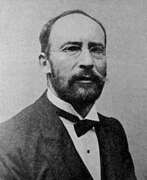

Meijer Isaac de Haan was a Dutch painter. In 1874, he was accepted into the Rijksacademie van beeldende kunsten at Amsterdam. In 1880, one of his works was exhibited at the Paris Salon. That same year, an illustration of de Haan's picture Een moeilijke plaats in de Talmoed appeared in the newspaper Eigen Haard, which generated much published discussion (not so much aesthetic as theological). He enjoyed some success in the Netherlands as a painter of Jewish genre works. In Amsterdam de Haan painted portraits and took on several pupils. De Haan remained in Amsterdam until 1888, where he produced chiefly portraiture, and representations of working class Jews. His early work was inspired above all by the masters of the Dutch school, such as David Teniers and Rembrandt. The example of 17th century painting is reflected in his history painting of 1877–1888.
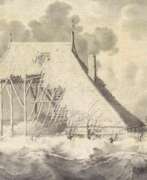

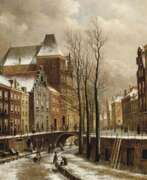

Oene Romkes de Jongh was a 19th century Dutch landscape painter. He is known for his detailed urban views. He painted mainly landscapes of Amsterdam and domestic scenes around Lake Eijsselmer. De Jongh was particularly influenced by Cornelis Springer.
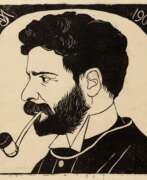

Samuel Jessurun de Mesquita was a Dutch graphic artist, born on June 6, 1868, in Amsterdam, into a Sephardic Jewish family. He became well-known for his contributions to graphic art, especially in the years leading up to the Second World War, and was notable for his mentorship of the famed artist M. C. Escher. De Mesquita's work was characterized by a variety of techniques and mediums, including wood engravings, etchings, lithographs, watercolors, and drawings. His art often featured birds, exotic animals, plants, flowers, and fantastical elements, both humorous and grim, showcasing his deep experimentation and mastery over his craft.
His career took a significant turn around 1915 when he began to gain prominence within Dutch graphic art, partly due to his teaching positions in the field. De Mesquita's penchant for experimentation led him to explore various materials for his prints, such as marble and zinc, and he often processed his prints with other materials, resulting in unique artworks. His subjects ranged from his immediate surroundings, such as his own home or the Artis zoo in Amsterdam, to more experimental and imaginative works that included quasi-human figures and fantastical landscapes.
Unfortunately, de Mesquita's life and career were tragically cut short by the Holocaust. Despite friends urging him to go into hiding, Samuel and his wife believed their Sephardic heritage would protect them. This proved to be a fatal miscalculation, and on January 31, 1944, they were arrested by the Nazis and subsequently died in Auschwitz. Their son Jaap died in Theresienstadt in March of the same year. M.C. Escher, a former pupil and friend, managed to save some of de Mesquita's works after his death, preserving his legacy for future generations.
Samuel Jessurun de Mesquita's body of work is a testament to his skill and creativity, with his pieces held in collections like the Kunstmuseum Den Haag and The Metropolitan Museum of Art. His works range from serene and simple depictions of animals and plants to more complex and imaginative 'Sensitivist' drawings that evoked a unique world from the artist's imagination.
For collectors and experts in art and antiques, de Mesquita's work offers a unique insight into the rich tradition of Dutch graphic arts and the avant-garde experiments of the early 20th century. His influence, particularly on M.C. Escher, highlights his importance in the development of graphic arts. Sign up for updates related to Samuel Jessurun de Mesquita to stay informed about new product sales and auction events showcasing his remarkable works.
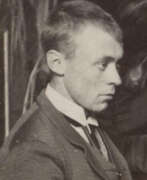

Pieter Cornelis de Moor, a Dutch artist, stands out as a versatile and innovative figure in the art world. His education at the Academy of Visual Arts in Rotterdam and the Drawing Academy in Antwerp laid the foundation for a career marked by diversity and creativity. De Moor's achievements, including a silver medal in the Prix de Rome in 1887, underline his early recognition and the promise of his artistic journey.
De Moor's artistry was not confined to a single medium; he was adept in drawing, etching, painting, watercolor, producing lithographs, and working as an illustrator. His artworks, ranging from "Dancing Women" to "Poultry on a Yard" and "An Elegant Lady Feeding Peacocks," showcase his broad thematic interests and technical skills. Notably, his works are held in prestigious collections, including the Rijksmuseum and the Dordrechts Museum.
The artist's life was rich with experiences, having worked across Europe and eventually settling in the United States. His legacy, punctuated by exhibitions in museums such as Museum Boijmans Van Beuningen and the Drents Museum, continues to captivate art enthusiasts and collectors.
For collectors and art experts, delving into the works of Pieter Cornelis de Moor offers a unique glimpse into the evolution of Dutch art. His contributions, particularly in the realm of Symbolism, highlight an era of artistic exploration and innovation.
Stay informed about new product sales and auction events related to Pieter Cornelis de Moor by signing up for updates. This subscription is your gateway to the latest acquisitions and opportunities in the world of this distinguished artist.
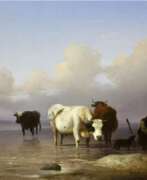

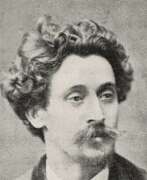

Louis Victor Antonio Artan de Saint-Martin was a Belgian marine painter. His work was influenced by the Barbizon School and the French marine painter Eugène Boudin. A convinced realist, he confined himself to the familiar North Sea, which he studied every day. He was fascinated by dramatic effects and exceptional atmospheric conditions. Just as in the paintings of the Tervuren school, his painting, created by the use of large quantities of pigment applied in copious layers or large masses skilfully distributed and then worked with a trowel, gives the work an appearance of breadth and immediacy.
Saint-Martin was one of the sixteen co-founders of the Société Libre des Beaux-Arts, an association opposed to the stylistic hegemony of the academies and salons. After 1880 he worked in a more impressionist style, and in 1881 he became a Chevalier de l'Ordre de Léopold. Two years later, the artist was awarded a gold medal at the International Colonial and Export Exhibition in Amsterdam.
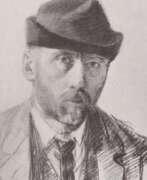

Frans Deutman was a Dutch painter. He graduated from the Antwerp Academy of Arts, a pupil of Charles Verlat. He belonged to the Laren School of painting, a direct continuation of the Hague School.
Frans Deutman is known for his portraits and figures in interiors.
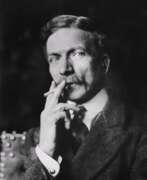

Jean Baptiste Discart was a French painter. He worked mainly in France and the Netherlands.
Jean Baptiste Discart in 1869, he enrolled at the Academy of Fine Arts Vienna, aged only fourteen. He would study there almost continuously until 1880. His primary professors were Leopold Karl Müller and Anselm Feuerbach. It was there that he first developed an interest in Orientalism.
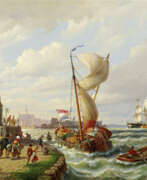

Pieter Cornelis Dommersen, born as Dommershuisen, was a Dutch painter and watercolourist active in England.
He was the elder brother of the painter Cornelis Christiaan Dommersen. His son William Raymond Dommersen (Dommerson) (1859-1927) also became a fine art artist in England, all three Dommersens painting the same genre of paintings. Pieter Cornelis specialist in sea-, land- and river-scapes.
Works of Dommersen are present in many museums such as Amsterdam, The Hague, Rotterdam, Utrecht and many museums in the United Kingdom.


Cornelis Christiaan Dommersen, born as Dommelhuizen, was a Dutch painter and watercolourist.
Cornelis Christiaan specialized just like his brother in sea -and river scapes and coastal scenery as those paintings had found a revival during the 19th century in Europe. He traveled abroad to countries such as England, America, Belgium and France, just like his countryman Abraham Hulk Senior did. However, in the end he found satisfaction painting not only river- and seascapes in the Netherlands but also the interior of villages and towns along the rivers.


Pierre Louis Dubourcq was a Dutch landscape painter, lithographer and etcher. He was a student of Jan van Ravenswaay in Hilversum in 1834 and of Andreas Schelfhout in The Hague in 1835. He mainly painted mountain and forest landscapes and he etched, drew, created watercolors and lithographs. From 1834 to 1858 he took part in the exhibitions in Amsterdam and The Hague. Prince Alexander of Orange-Nassau commissioned him to do some watercolors of the falconry hunts at Het Loo Castle. He was a member of Arti et Amicitiae, the Koninklijke Academie van Beeldende Kunsten and the Natura Artis Magistra Society.


Otto Eerelman was a Dutch painter; best known for his depictions of dogs and horses. He was also a court painter and did several portraits of Wilhelmina, as Princess and Queen. His best known painting, "De paardenkeuring op de Grote Markt op de 28ste augustus", depicts an annual celebration (featuring horses) held to commemorate the lifting of the Siege of Groningen.
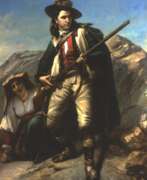

Johannes Hinderikus Egenberger was a Dutch painter, photographer and art educator. From 1840 to 1848, he studied at the Royal Academy of Fine Arts in Amsterdam with Jan Willem Pieneman. During these years, he focused on painting scenes from Dutch history. In 1854, he collaborated with Barend Wijnveld to produce a massive canvas depicting the heroic defense of Haarlem led by Kenau Hasselaer in 1573. Later, he would turn to landscapes, domestic scenes and portraits, including a series for the Rijksuniversiteit. In 1857, he was appointed Headmaster of the Academie Minerva in Groningen. In addition to his work there, he became a photographer and, in 1864, opened the first photography studio in Groningen. The following year, he resigned his position as Headmaster to devote himself entirely to photography.


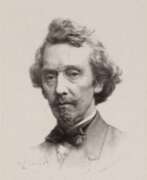

Petrus Franciscus Greive was a Dutch painter and lithographer. He studied with Jean Augustin Daiwaille, Jan Willem Pieneman and Christiaan Julius Lodewijk Portman at the Rijksakademie in Amsterdam. Later, he taught there and was a member of Arti et Amicitiae. His style was based on that of the old Dutch Masters.
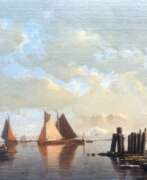

Johan Conrad Greive was a 19th-century Dutch painter. He was a member of Arti et Amicitiae from 1863, where he became chairman for three years. He is known for his paintings, lithographs, and topographical drawings in various sketchbooks, many of Amsterdam subjects. He created genre works, artist portraits, landscapes, and marines. Johan Conrad Greive's work has been offered at auction multiple times.
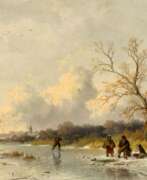

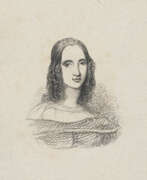

Elisabeth Alida Haanen was a 19th-century painter from the Northern Netherlands. From 1838 she was an honorary member of the Royal academy of art in Amsterdam (Koninklijke Academie voor Beeldende Kunsten). She is known for her genre paintings, but was also a papercut artist who cut more than a hundred portraits of artists around 1837.
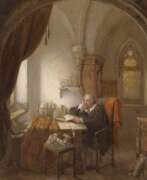



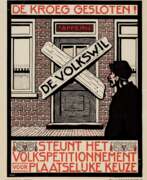

Albert Pieter Hahn was a Dutch political cartoonist, poster artist and book cover designer; well known for his socialist and antimilitaristic viewpoints. Some of his drawings, especially those of the railroad strikes of 1903, have been regularly used in history textbooks. His son-in-law, Albert Hahn jr., was also an artist, so he is sometimes referred to as "Sr.".


Lambertus Johannes Hansen was a 19th-century Dutch painter. His main subject was the painting of inner houses, with doorways and incident lights. He is known for historical interiors in the manner of Pieter de Hooch. Both at the Royal Academy of Art in Amsterdam, as well as at the Society Felix Meritis, he won several prizes. In 1832 he won a silver medal for his painting after a nude model. In 1833 he became a fellow member of the Amsterdam Academy and also a teacher at that institution.
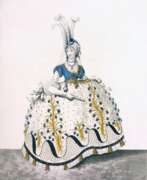

Nicolaus Heideloff, full name Nikolaus Innocentius Wilhelm Clemens van Heideloff, was a German painter and copperplate engraver and publisher.
Heideloff came from a respected family in Germany that included prominent painters and sculptors. He studied and worked in Paris, but had to flee to London during the French Revolution, where he spent 30 years of his life. Here he worked as a publisher for the most luxurious fashion magazine of the time, The Fashion Gallery, which published elaborate color copperplate prints, aquatints, and etchings. Heideloff drew many outfits for the publication for all occasions of high society.
Nikolaus Heideloff also depicted historical scenes, battles, the British navy, and caricatures for Rudolf Ackermann while he was working in London until 1814, often as hand-colored etchings.
In 1815, William I, King of the Netherlands, appointed him director of an art gallery in The Hague.


Marie Heijermans, full name Catherine Mariam de Roode-Heijermans, is a Dutch artist.
She studied at the Koninklijke Academie van Beeldende Kunsten (Royal Academy of Arts, The Hague) and at the Academy of Visual Arts (Academie voor Beeldende Kunsten) in Rotterdam. She was a member of the Cercle des Femmes Peintres, a society of women artists. While in Brussels, Heijermans achieved success in the Paris Salon. She subsequently painted Victime de la misère, in which she depicted a naked woman, a clothed man and a chair with a banknote lying on it. The painting was censored and removed from the exhibition. The scandal led to the early termination of her three-year work grant from the Belgian Queen Regent. In the late 1920s, the painting was acquired by the Stedelijk Museum.
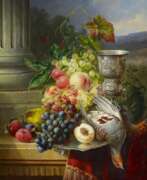

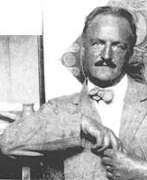

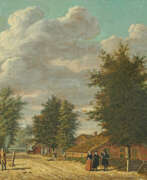

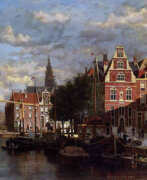

Johannes Frederik Hulk was a Dutch painter, draftsman, photographer and paint shop owner.
Johannes Frederik Hulk painted mainly landscapes, seascapes, towns, villages and harbours. He was a member of the Arti et Amicitiae in Amsterdam.


Jozef Israëls was a Dutch painter. He was a leading member of the group of landscape painters referred to as the Hague School and, during his lifetime, «the most respected Dutch artist of the second half of the nineteenth century».


Diederik Franciscus Jamin was a Dutch genre and history painter and daguerreotypist. Jamin was a student of Petrus Franciscus Greive and David Joseph Bles. Jamin devoted himself to genre and history painting. In 1854 he worked in The Hague as a daguerreotypist. Jamin was a member of "Arti et Amicitiae" in Amsterdam. Jamin took part in exhibitions in Amsterdam from 1858 to 1865. Groningen, The Hague and Leeuwarden.
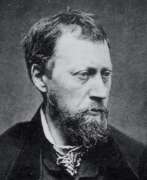

Johan Barthold Jongkind was a Dutch painter and printmaker. He painted marine landscapes in a free manner and is regarded as a forerunner of Impressionism.
Jongkind's most frequent subject was the marine landscape, which he painted both in the Netherlands and in France. Many of his works depict the Seine, particularly the area near Notre-Dame Cathedral. He painted watercolors out-of-doors, and used them as sketches for oil paintings made in his studio. His paintings are characterized by vigorous brushwork and strong contrasts. Like the 17th-century Dutch landscape painters of the Golden Age of Dutch painting, he typically composed his landscapes with a low horizon, allowing the sky to dominate.
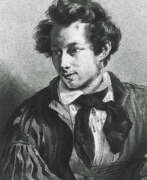





Hendrikus Johannes Knip or Henri Knip was a Dutch and Belgian landscape painter in the style of Dutch Romanticism and a draftsman.
A member of the Knip artistic dynasty: his father was the painter Matthäus Derk Knip (1785-1845), his grandfather was the painter Nicolaas Frederik Knip, and his uncles and aunts were also painters.
Hendrikus Knip worked in the Netherlands, Belgium, Italy and Switzerland.


